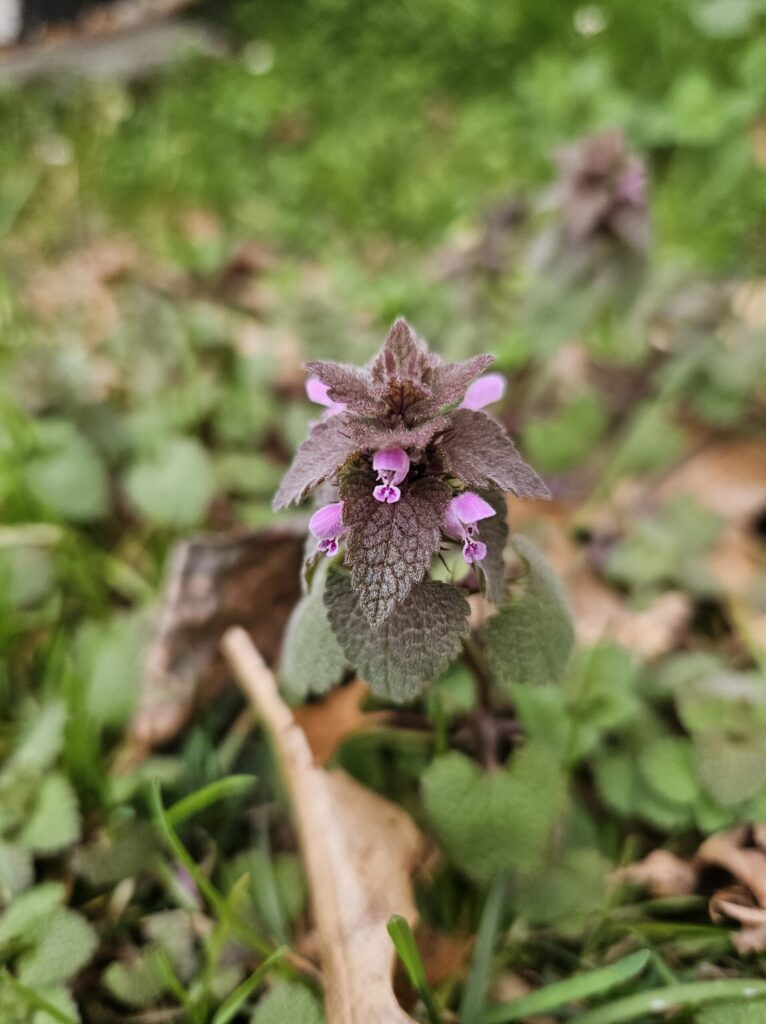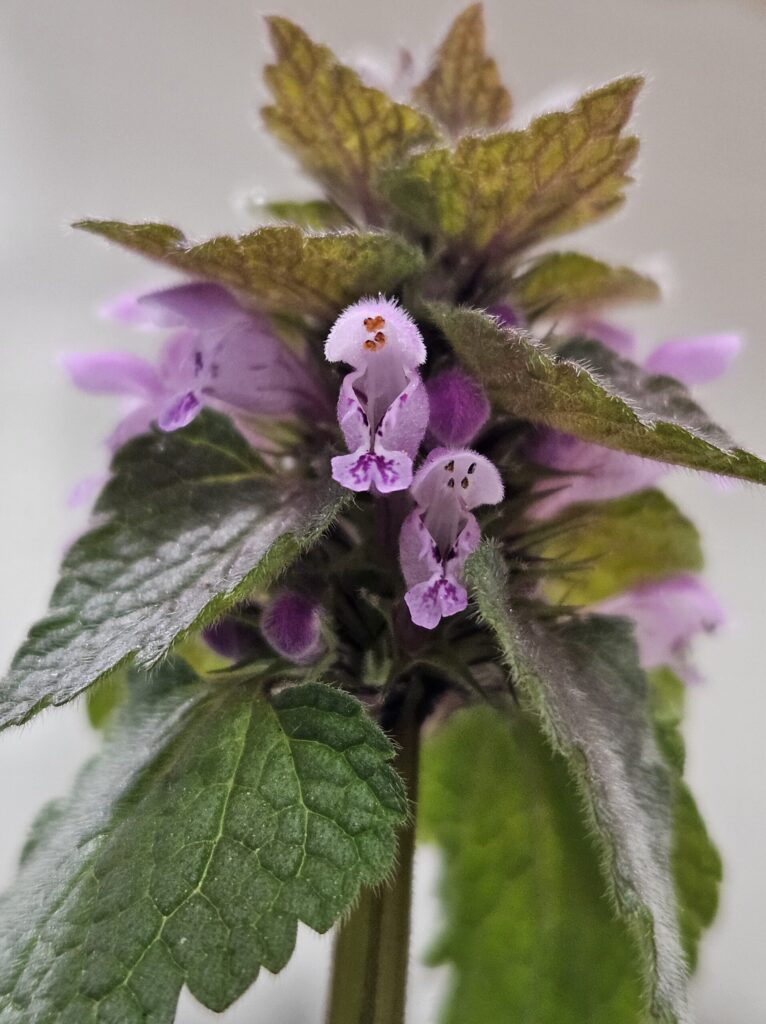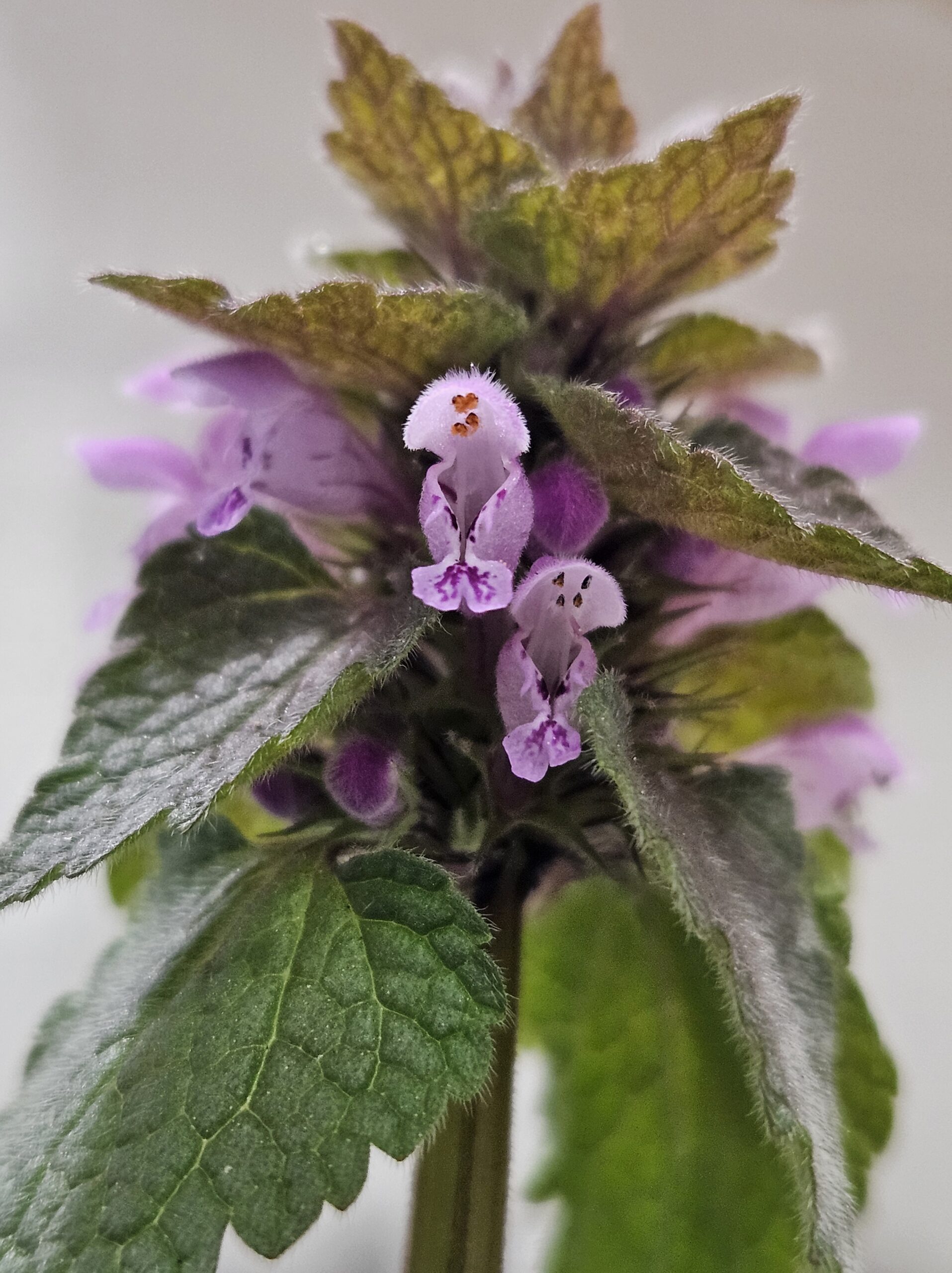
Description
Purple Deadnettle is a naturalized herbaceous annual from Europe and Asia which blooms early in the year and is generally considered a weed. Lamium purpurem was first described by Carl Linnaeus in 1753 in the genus Lamium (see attached PDF).
L. purpurem consists of square stems 2 to 8 inches in length with leaves that have fine hairs that are green at the bottom of the stem and become more purple as you approach the top.

The flowers are zygomorphic, meaning they are symmetrical capable being divided by a single line, bright purple with a top hood-like petal, two lower lip petal lobes and a minute fang-like lobe.
Potential Health Benefits
L. purpureum flower exhibit antioxidant and free radical scavenging activities and have also been reported being used in tonics for the treatment of constipation. Studies including the one listed below as PDF #3 indicate that the Lamium family has high concentration of iridoid glucosides, these are plant compounds that act as a defense for the plant against herbivories and often exhibit pharmacological activities like anti-inflammatory and anti-cancer effects.
Referring to a study conducted on 9 populations of flowers of L. album, L. purpureum, L. garanicum and L. maculatum, where gas chromatography and mass spectrometry showed:
Unusual high concentrations of the terpenoid squalene
were established in all analyzed plants (Alipieva et al.
2003a, 2003b). Squalene is a flower attractant for
pollinating insects and repellent against ants and
possesses significant biological activity as bactericidal, anti-tumor and immunostimulant (Dutton et al.
2002).
It is clear that further studies will be conducted on the deadnettle species to better understand the medicinal properties of these plants.
Sources


Leave a Reply